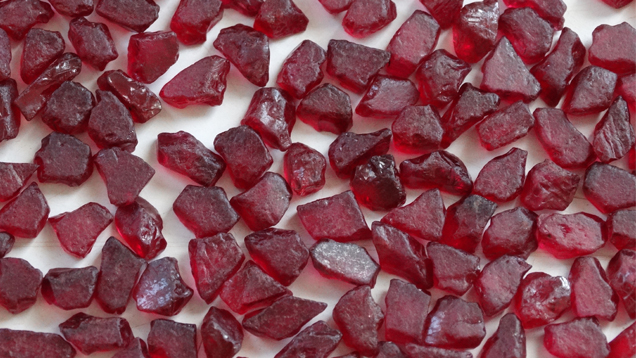On June 3, 1924, over half a million acres of pristine mountain meadows, rock-walled canyons, and aspen glades in southwest New Mexico’s Gila National Forest were designated as the world’s first protected wilderness area. Today, a century later, the National Wilderness Preservation System includes 806 official “wilderness areas” spanning nearly 112 million acres in the United States—an area twice the size of the United Kingdom.
Two years after Gila’s designation, educator and hiker Catherine Montgomery proposed creating “a high-winding trail down the heights of our Western mountains… from the Canadian Border to the Mexican [border].” The idea gained momentum in the 1930s under the stewardship of oilman and avid outdoorsman Clinton C. Clarke, who devoted much of his life to establishing a border-to-border trail “traversing the best scenic areas and maintaining an absolute wilderness character.” This vision eventually became the Pacific Crest Trail (PCT), a 2,650-mile path connecting Canada to Mexico, often hailed as the West Coast’s “greatest footpath.”
In 2023, seeking a challenge to break us from our desk-bound lives and thrust us into the wild, my partner Claire Taylor and I qualified as Mountain Leaders and embarked on an epic journey to complete the entire PCT. For five months, we hiked past cascading waterfalls, snow-covered badlands, and narrow slot canyons as we traveled south along “America’s Wilderness Trail.” One section stood out: the state of Washington, home to 31 designated wilderness areas, 11 of which the PCT traverses.
The Washington section of the PCT covers 505.7 miles of incomparable beauty, passing through remote passes, snowy peaks, and dense ancient forests with little sign of human life. Washington’s portion of the PCT leads hikers through a greater percentage of designated wilderness areas (63%) compared to Oregon and California (52% and 37%, respectively), staying true to Clarke’s vision of preserving the original American wilderness.
Into the Wild
“But what about the bears?” Claire asked. I replied with the line I’d been telling myself: “The presence of bears embodies the wilderness that we are seeking.” In truth, having never hiked in bear and mountain lion country, we were a bit nervous. We were about to spend five months hiking the PCT with only our tent and hiking poles for protection. On our first day, we jumped out of the back of a pick-up truck with a faded bumper sticker that read, “Into the forest I go, to lose my mind and find my soul,” and onto the trail.
After an hour cramped among a handful of other hikers on a dusty dirt road winding along steep cliff edges from Mazama, Washington, to the trailhead at Hart’s Pass, we started our journey. Since it isn’t permitted to cross a remote, unmanned border into the US from Canada, most southbound hikers start at Hart’s Pass and trek north for 30 miles to “tag” the border before returning to where the pick-up truck dropped them off four days earlier.
The North CascadesOur journey began in the North Cascades, a vast mountain chain spanning more than 500 miles, known for its jagged peaks, subalpine meadows, glaciers, and waterfalls. “If you look at a map of Washington state, all the wildest places run down the spine of the North Cascades mountains,” says Chris Morgan, an ecologist, filmmaker, and podcaster who has called the North Cascades home for the past 30 years. “That spine is where our wilderness areas protect the wildest of our wild—untamed landscapes where nature rules and reconnecting with raw, unfiltered life is still possible.” As Claire and I peered out from the dense forest to the towering mountains, we were struck by the vastness, remoteness, and grandeur before us.
Ancient “Blowdowns”Within designated wilderness areas, there is minimal human intervention. “[Protected wilderness areas] were set up as places for humans to visit, but not linger,” Morgan explained. Ten days into our journey, we hiked through Glacier Peak Wilderness Area, known for its heavily forested streams, steep-sided valleys, and rugged glacier-covered peaks. Fallen trees littered the path, often requiring us to carefully clamber over or under the debris. We passed a large “blowdown” fir tree that had been knocked down by a storm and cut and cleared by hand. Upon closer inspection, we noticed someone had counted and marked its rings. Squinting, we counted roughly 700, meaning this tree was here over 100 years before Columbus sailed to the Americas. As Morgan told me: “These [wilderness] areas thrust you back in time… to a time that connects us all to the raw nature of primordial life.”
Staying WildThe PCT is maintained by the Pacific Crest Trail Association (PCTA) and a team of incredible volunteers. When I later asked Kage Jenkins, who works for the PCTA, about the role of designated wilderness areas, I was reminded of the 700-year-old downed tree. Kage explained, “Trail maintenance projects in wilderness areas mean no chainsaws or motorized tools; we rely on the crosscut saw. There’s a simplicity and joy in spending the better part of a day at the foot of a stratovolcano cutting an enormous Douglas fir.” I then asked how the PCTA manages to maintain the trail while also keeping it wild. “The trail itself always finds a way to stay wild,” Kage said.
Shifting LandscapesBy July, the snow had just melted, but there was already talk of fire among fellow hikers. We passed one young trekker heading north to the Canadian border, who told us, “I hiked 2,600 miles last year but couldn’t reach the border due to fire closing the trail. I’m back to hike the last 50 miles!” Wildfires are a real threat in Washington. In July 2014, the Carlton Complex Wildfires burned 256,108 acres. This threat also provides opportunities for nature; some animals like the black-backed woodpecker and fire chaser beetle thrive in burn zones, while seeds from plants such as the snowbrush show that fire can stimulate germination. A warming climate means the frequency and magnitude of Washington’s wildfires will likely increase.
In late July, we encountered our first burn zone. We hiked in silence through the dead trees, eerily quiet and disarming. The charred remains were a sobering reminder of how quickly seemingly indomitable landscapes can be altered.
Ups and Downs
Hiking through Washington was both exhilarating and calming. Shortly after setting out, we came across bear droppings on the path. Some nights, our campsite was swarmed by mosquitoes that had recently hatched after the melting snow. Other times, we rushed to find a flat campsite as thunder rumbled. This rollercoaster pattern continued, with hours of stunning hiking interrupted by extreme weather and energy-sapping lows. As Kimberly Myhren, a hiker we befriended on the PCT, said, “What makes [the PCT in Washington] difficult to hike is also what gives Washington its serene and rugged beauty.”
These ever-shifting landscapes added to the sense of wonder and adventure we felt along the trail: we weren’t just passing through the environment but interacting and coexisting with it. “As many wilderness areas are large enough that there is no cellular service, these landscapes are places where one tends to disconnect from technology and be present in a different manner,” Michael DeCramer, policy and planning manager at the Washington Trails Association, later explained. “Visiting a wilderness area can afford an experience of remoteness that is difficult to find elsewhere.”
“The Mountain”
After a few weeks, we settled into a rhythm. While our GPS told us we were covering an average of 20 miles and ascending more than 3,200ft each day, we soon measured things differently, focusing less on time and distance and more on our emotional and physical states. We were, as DeCramer later said, “present in a different manner.”
One sunny day in mid-July, “the mountain,” as it’s known to Seattle locals, came into view. Mt. Rainier, the iconic 14,410ft active volcano and the most glaciated peak in the lower 48 states, appeared like a beacon. We had hiked 250 miles and knew we would enter the Mt. Rainier Wilderness Area at mile 330, and seeing it on the skyline reinforced how quickly we were moving. Each time we emerged from a dark forest or a sheltered hillside, the mountain seemed to grow. We often pitched our tents to catch a glimpse of it before falling asleep and watched the first rays of sun reflect off its snowy peak each morning as we sipped our coffee.
The Climb
The high-altitude terrain means that hiking the Washington section of the PCT shouldn’t be taken lightly. It took us a full month to reach the Oregon border, by which time we had ascended nearly 100,000ft—the equivalent of climbing Everest three times. With bags full of food, water, a tent, a sleeping bag and mat, clothing, a stove and gas, and other gear, our fitness levels quickly improved. We had spent months training, yet still found ourselves exhausted most days and falling asleep by 8 PM. After just 19 days, we had both lost weight and managing our weight and calorie intake became a battle we would fight for most of the trail.
Wilderness and Civilization
Whenever we needed to hike into nearby towns for supplies, the transition from wilderness to civilization was abrupt, and it felt strange to suddenly interact with locals after days without washing. Filling up on much-needed food was great, but hiking out with a heavy bag was challenging. Our meals consisted of lightweight, high-caloric foods like seeds, nuts, dried fruit, noodles, porridge, milk powder, and the occasional freeze-dried meal. We stored our provisions in bear canisters that doubled as stools while preparing dinner. The canisters are designed to prevent bears and other creatures from accessing food supplies and ensure there is no association between people and food.
One morning, we were awoken by the sound of a pack of coyotes playing as the sun rose, their howls echoing through the forest. We had five bear encounters in Washington, including a close interaction with a mother and two cubs more interested in berries than our presence. We met hikers who had seen mountain lions just meters from their tent. Deer often appeared while we were camping, curious and unafraid. On many afternoons, we passed marmots who whistled loudly at us to stay away.
Rustic Lodging
Long hikes often end at a cabin with a hot shower, but not on this section of the PCT. “Washington is home to some of the most remote areas on the entire PCT,” explained Kage. “There are 40-mile sections of trail between the nearest two roads, further still to the nearest town.” We carried our home with us, pitching our tent every night at established flat dirt spots along the trail. Many nights, we slept closer than we’d like to dead but still standing trees—known as “widow-makers” for their tendency to fall in the night.
While I missed a hot shower at times, many hikers prefer this rustic approach. As DeCramer said, “Many people report that wilderness areas provide an opportunity to experience challenge and self-reliance.” Kage agreed, adding, “The PCT helps ensure each hiker can enjoy their own wilderness experience: appreciating a natural landscape and ecosystem, finding isolation, or connecting to and interdependence with wild places.”
“What About the Bears?”
After a month of hiking through Washington, I thought back to Claire’s first question: “But what about the bears?” As I began writing this, a PCTA update flashed on my phone: grizzly bears will soon be reintroduced into Washington’s wilderness areas. “There are only six ecosystems in the USA outside of Alaska considered wild enough for grizzly bears, and this is one of them,” said Morgan, who has been instrumental in advocating for their reintroduction. “They will feel right at home deep in the heart of the endless forests and giant peaks that their ancestors once roamed.”








